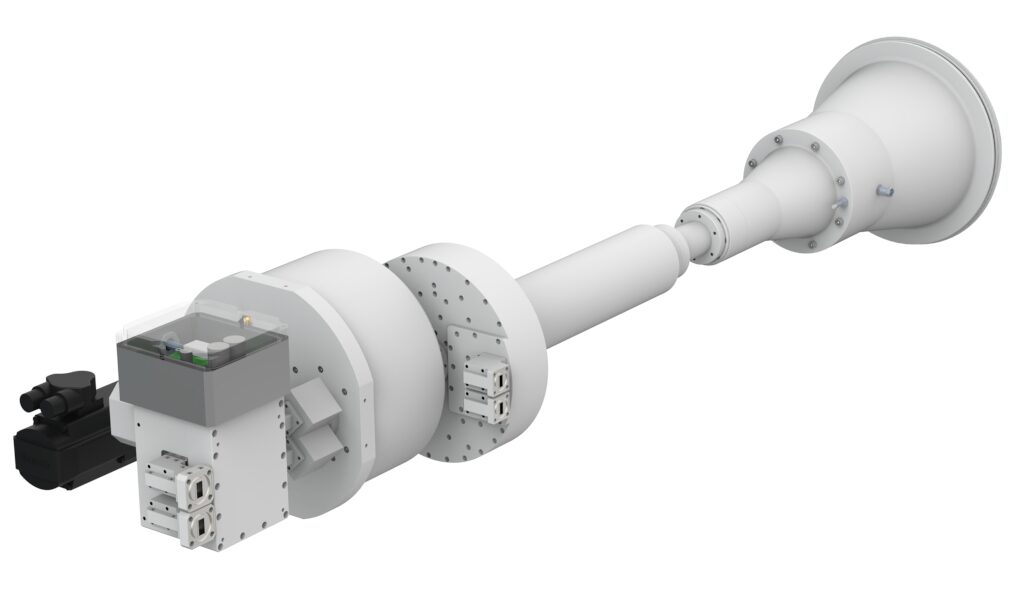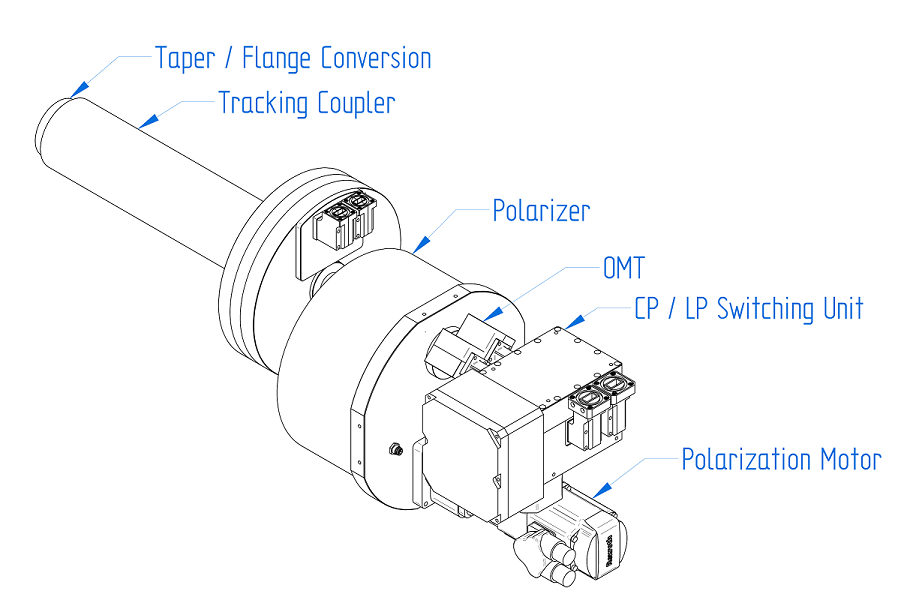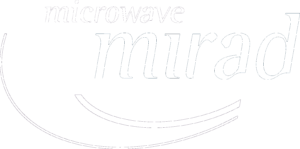Since Ka-band frequencies have been made available for satellite communications, data can be transmitted at significantly higher bandwidths. The 30/20 GHz Ka-band was first used in the experimental ACTS Gigabit Satellite Network in 1993 and is currently still used worldwide for high-throughput satellite-based Internet access in geostationary (GEO) or low earth (LEO) orbits.

The frequencies are used in proven systems such like the Inmarsat-5 or Kacific K-1 satellites but also new applications such as SpaceX’s Starlink system, the Iridium Next Satellite Series or SES’s O3b system are equipped with several Ka-band transponders. To serve all the different application and customers needs different antenna systems are required that operate for example in different polarization modes, including tracking capability or just require Rx-only operation. Furthermore the transponder location is moving to extended ranges like 17.3 or 17.2 GHz.
For this reason MIRAD developed a new kind of Ka-band feed combiner on a modular basis that can be equipped with different options for all needs. The ultra broadband design can receive and track frequencies from 17.2 to 22.5 GHz. For transmit capability a diplexing unit can be installed with sufficient rejection between the Rx and 27.0 to 31.0 GHz transmit band. For tracking purposes the implementation of TE21-mode tracking coupler can be foreseen. The latest version of MIRADs motorized polarizer unit allows the precise polarization adjustment for two orthogonal linear polarized signals. With MIRADs standard polarization switch unit, the polarization mode can easily be selected between linear to circular polarization with excellent XPD or axial ratio performance. To improve the reliability, the complete system is sealed to protect mechanical or RF parts from environmental influences like moisture or dust.

The feed combiner can be supplied with a suitable adapter to the customer’s feedhorn interface, but furthermore MIRAD also offers the feed horn design if the reflector data of the customer antenna is available. Otherwise, our engineering service can also provide a complete antenna reflector shaping including horn and combiner design to give you the best possible antenna efficiency through a one-hand design.
The following key parameters represent our standard Ka-band combiner. The values can vary by the selected configuration:
Frequency Range:
Ka-RX: 17.20 – 22.500 GHz
Ka-TX: 27.00 – 31.00 GHz
Polarization:
Ka-RX: dual circular or linear
Ka-TX: dual circular or linear
Insertion Loss:
Ka-RX: typ. <0.5 dB
Ka-TX: typ. <0.5 dB
Axial Ratio / XPD:
Ka-RX: typ. <0.5 dB / >40 dB
Ka-TX: typ. <0.5 dB / >40 dB
Port-to-Port Isolation:
Ka-RX: >20 dB (circ.) / >40 dB (lin.)
Ka-TX: >20 dB (circ.) / >40 dB (lin.)
Isolation TX/RX:
Ka-RX: >85 dB
Ka-TX: >85 dB
Our team is at your disposal with a wide range of services to find the perfect configuration for your antenna system and communication requirements. For more information or inquiries, do not hesitate to contact us.
MIRAD microwave
Your reliable partner for Gigahertz Innovation
